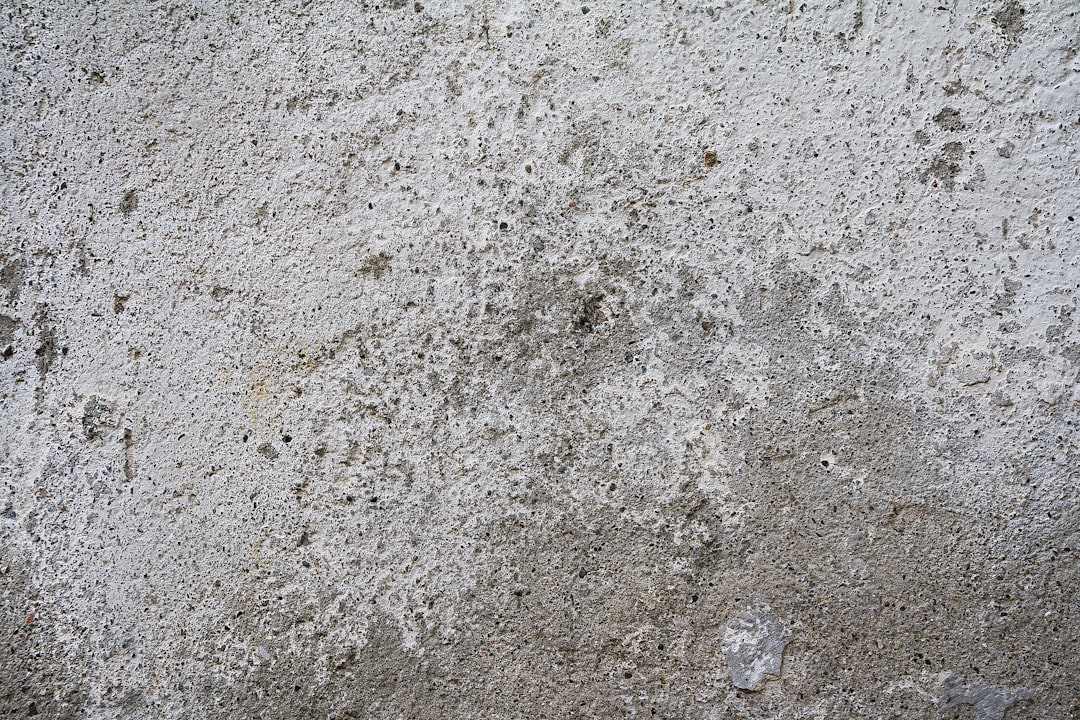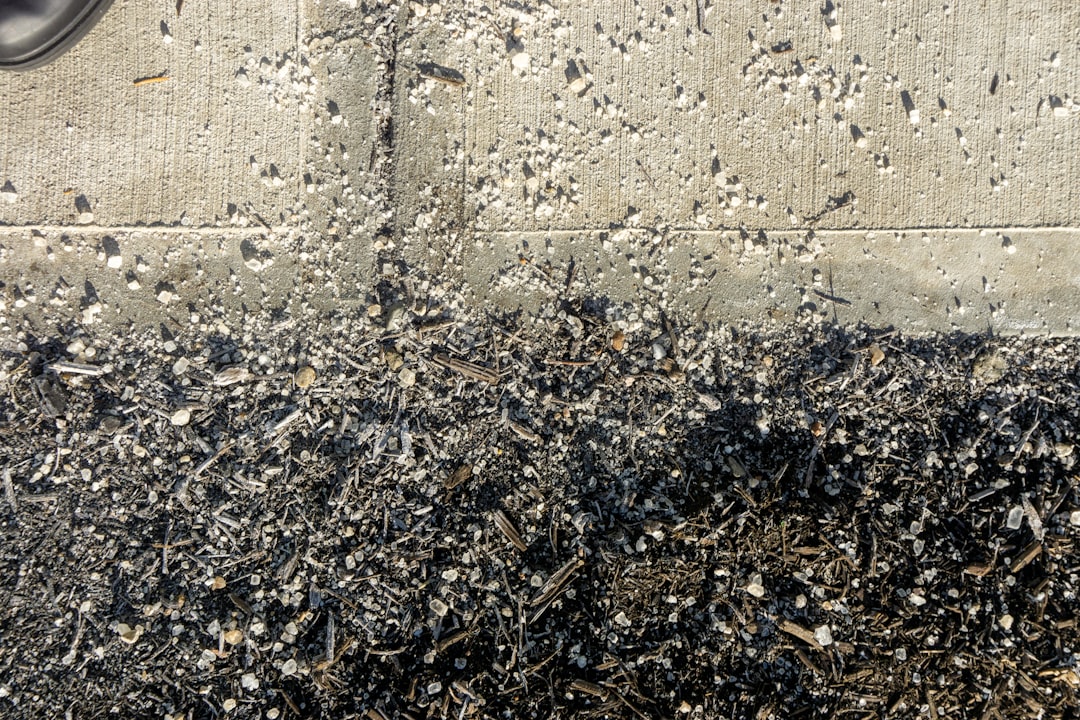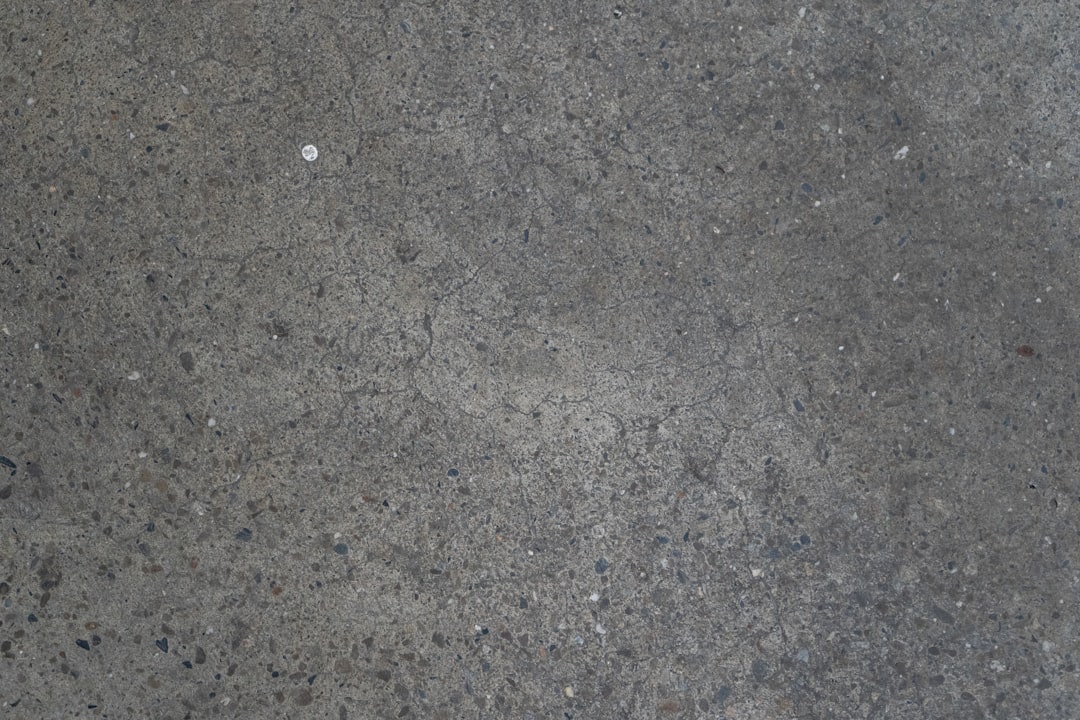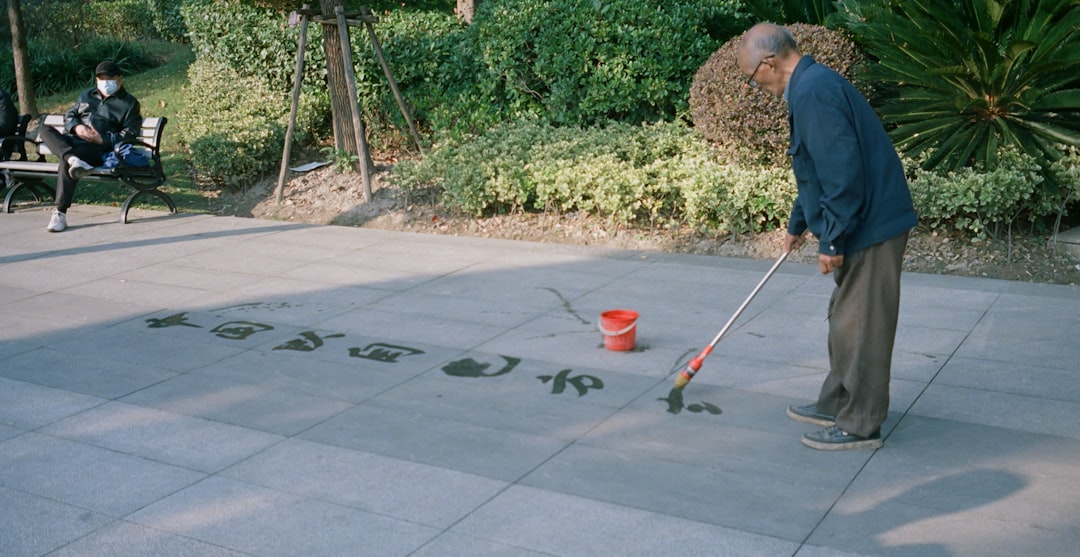

Engage prospects with a scan and streamline customer engagement with FREE QR code marketing tools by Sona – no strings attached!
Create a Free QR CodeFree consultation

No commitment

Engage prospects with a scan and streamline customer engagement with FREE QR code marketing tools by Sona – no strings attached!
Create a Free QR CodeFree consultation

No commitment
QR codes enable concrete cleaning services to modernize the traditionally manual bridge between offline awareness and online action. In many firms, leads generated from print flyers, business cards, or event handouts get lost or delayed because there is no simple way to act in the moment. Prospects often hesitate to complete lengthy paper forms, delay calling for more information, or misplace a postcard before they are ready to book. This creates a gap between interest and action that quietly drains pipeline potential.
Replacing analog handoffs with QR-powered journeys solves that problem. A single scan can put someone in the right digital flow: submitting a booking request, calculating an estimate, browsing project galleries, or leaving a post-job review. Teams get faster intent signals, better attribution, and cleaner data. With dynamic codes and connected analytics, you can trace every scan, measure which assets perform, and automatically route qualified inquiries into your CRM for timely follow-up.
To overcome common friction points, QR codes can be used to streamline your most important touchpoints:
Some companies now employ integrated QR platforms that automate these steps at scale. The result is fewer missed opportunities, better visibility into high-intent anonymous prospects, and a healthier pipeline built from the same physical touchpoints you already use. Sona QR supports this end-to-end transformation with dynamic code management, analytics, and integrations that turn scans into outcomes.

Concrete cleaning companies invest heavily in tangible marketing assets: yard signs in front of active jobs, flyers in residential neighborhoods, and vehicle wraps that circulate across service areas. These assets create awareness but rarely reveal who is engaging. Without a direct link to action, it is difficult to know whether that postcard or that truck-side graphic inspired a serious prospect or a passing glance.
QR codes close this visibility gap. A scan transforms passive interest into measurable engagement and provides a frictionless route to the next step. Instead of hoping someone calls later, you can invite action now and track what happens afterward. When a homeowner scans a yard sign to claim a neighbor discount or a property manager scans a trailer sticker to request a bid, you capture intent in real time and can respond with precision.
In practice, this means your offline campaigns become accountable. A driveway flyer can link to a 30-second estimate flow. A building entrance sign can route property managers to a compliance and safety packet. A vehicle wrap can connect nearby viewers to a limited-time multi-surface cleaning bundle. Each scan informs your strategy and your follow-up.

Service providers lose opportunities when prospects gather information from signs or equipment but fail to take the next step. Thoughtful QR formatting ensures that scans meet the prospect’s intent and create a smooth journey from interest to action. For concrete cleaning, several formats are especially useful.
Dynamic QR codes are recommended for most marketing and sales use cases. They allow you to edit destinations, test different offers, and capture robust analytics without reprinting. Reserve static codes for evergreen content like a general brochure PDF or a permanent service hotline vCard. With Sona QR, you can generate any format, manage content centrally, and analyze scan behavior at the campaign and asset level.

Missed lead capture at high-visibility touchpoints is a persistent challenge in concrete cleaning. Business cards get filed and forgotten. Vehicle wraps are seen daily but spark no direct action. Jobsite banners attract attention but provide no immediate way to engage. QR codes transform these passive impressions into measurable conversations. See pressure washing QR codes.
Start by inventorying your physical footprint across a typical week. Map out every surface that already carries your brand or could carry a call to action. Then define the most relevant destination for each context. The goal is to prompt a simple, valuable action that matches what the viewer likely wants in that moment: a price estimate, a proof of compliance, or an easy way to book.
Identifying and activating these offline conversion points turns passive interest into action. As scans accumulate, you will see which neighborhoods respond to which offers, which job types generate referrals, and which placements justify expansion.

Concrete cleaning teams juggle bookings, field schedules, safety requirements, and client communications. QR codes streamline those workflows, making it easier to capture revenue and feedback while maintaining high standards. Here are practical use cases aligned to common interactions.
With modern tracking, these use cases can be attributed to revenue. You can identify upsell potential based on which guides are viewed, see how quickly reviews are submitted after scans, and measure the time from scan to booked job. Platforms like Sona QR make it straightforward to test variations, route scans by persona, and scale what works best.
Each QR code scan is a signal. It captures intent, timing, and context that can enrich your customer profiles and shape your outreach. By deploying different QR codes at various touchpoints, concrete cleaning teams can segment audiences automatically and tailor follow-up based on what people actually did, not guesses.
Start by aligning codes to stages in your buyer journey: awareness, consideration, and conversion. A homeowner who scans a door hanger to view a before and after gallery is not the same as a property manager who scans a jobsite sign to download insurance certificates. Treat the signals differently, and you will see stronger engagement and shorter sales cycles.
Concrete cleaning firms can differentiate between key audiences like homeowners versus property managers, retail facilities versus industrial sites, or emergency spill responders versus scheduled maintenance planners. With Sona QR, every code becomes a smart entry point that enriches your database and powers precise retargeting.
QR codes do not replace your channels. They connect them. When integrated across print, field operations, digital campaigns, and events, QR codes enable immediate engagement and deliver the analytics needed to optimize allocation. Your existing materials become interactive and measurable.
To maximize impact, pair each placement with a destination that fits its context. A billboard should not route to a long form. A post-job invoice should not route to a generic homepage. Match intent with the minimal next step and you will see higher conversion rates.
QR codes serve as the offline onramp to your digital engine. With a centralized platform like Sona QR, you can manage all codes, monitor performance across channels, and sync scan data with your CRM and ad accounts. This unified view helps you refine creative, reposition assets, and double down on what converts.
Stalled or incomplete follow-through often results from unclear goals, inconsistent code types, or missing tracking. A structured approach ensures that every scan is captured, attributed, and routed to a productive next step. Before you print anything, define what success looks like and how you will measure it.
Begin by selecting one or two high-impact use cases that align with active work. For example, your spring push may focus on residential driveway bundles, while your fall push may emphasize commercial slip-and-fall prevention. Build codes that support those goals first, prove the model, and then extend to additional placements.
Clarify the business outcome for your campaign. Are you aiming to collect post-job reviews, fill last-minute schedule gaps, or equip property managers with compliance documents? The use case determines the ideal placement, destination, and follow-up workflow.
Choose between static and dynamic codes. Static codes work for fixed destinations like a general brochure or vCard. Dynamic codes are best for marketing and sales because they enable edits, tracking, and testing without reprinting.
Your code has to be visible, scannable, and supported by a clear call to action. Design choices influence scan rates as much as the offer itself. Test in real-world conditions to avoid avoidable losses.
Prioritize placements where your audience already pays attention. In concrete cleaning, this often means vehicles, jobsite signage, neighborhood mailers, and event booths that attract property professionals.
Use analytics to tie scans to outcomes. Review performance regularly, adjust creative or placement, and route insights back into your operations. Optimization is where small gains become big results.
A major challenge for field service marketers is proving that offline interactions drive revenue. Yard signs, vehicles, and event booths generate attention, but traditional tools do not connect those touchpoints to booked jobs. QR codes paired with modern analytics close this loop and enable precise optimization.
The key is to treat each scan as a trackable event linked to a buyer journey. You need to capture scan details, resolve identities when possible, and connect outcomes like quote requests, scheduled visits, and invoices back to the original code. This creates a direct line from offline asset to revenue and informs smarter spending. For deeper context, see Sona’s blog account identification.
Sona QR captures scan activity and performance by asset. Sona.com extends that insight by helping resolve identities, unify multichannel touchpoints, and attribute revenue across a buyer journey. Together, they turn QR engagement into a measurable growth lever you can manage like any other performance channel.
QR-driven marketing delivers the best results when teams align on goals, standardize tracking, and empower crews to prompt scans at the right moments. Small operational tweaks often produce outsized gains in scan rates and conversion.
Prioritize tips that match your physical media and buyer journey. Residential demand generation might lean on door hangers, yard signs, and invoices. Commercial growth may focus on event booths, safety documentation, and compliance signage. Build from your strongest channel first, then extend. See creative QR ideas for commercial cleaning.
A practical example: include a QR code on every invoice that links to a “Schedule your next cleaning” page offering a loyalty discount. Another example: place a QR code on safety cones at retail entrances to share project status and expected completion times, reducing client questions and building trust.

The most compelling QR deployments feel natural in context and useful to the person scanning. They answer a question, unlock a benefit, or clear a hurdle in seconds. These scenarios illustrate how concrete cleaning teams can blend operations with marketing to create value and capture demand.
These approaches create feedback loops. Each scan surfaces data about location, interest, and timing. Teams can refine offers, update destinations, and replay the best combinations across regions and seasons.
Expert Tips:
Seasoned operators know that the details around design, placement, and follow-up matter as much as the code itself. Strong creative and precise routing improve scan rates. Clean data and timely automation turn scans into revenue. Keep the entire journey in mind when planning.
Common Pitfalls:
Avoiding a few common mistakes will save time and budget. Most failures arise from unclear goals, poor visibility in the field, and lack of post-scan follow-up. Address these early to set your program up for continuous improvement.
QR codes have made it possible for concrete cleaning companies to close long-standing gaps in lead capture and measurement. Every sign, sticker, invoice, and flyer can become a digital onramp that turns interest into action and action into revenue. The same assets you already deploy in neighborhoods, job sites, and events can now produce signals you can measure and optimize.
By blending creative placements with disciplined tracking and automation, teams can reduce missed opportunities and deliver a more connected customer experience. Scans flow into estimate requests, reviews, and booked site visits. Data flows into your CRM and ad platforms to guide targeting, budget allocation, and offer testing. The outcome is a more efficient, customer-centric operation that consistently captures demand at the moment it appears.
With Sona QR, you can generate and manage dynamic codes, monitor performance across all assets, and sync scan data with your CRM. Sona.com extends the value by connecting scans to buyer journeys through identity resolution and attribution, helping you prove impact and scale what works. For measurement strategy, see Sona’s blog multi-touch attribution. If you are ready to convert your physical presence into measurable growth, start by generating your first codes, place them on your highest-traffic assets, and build from there. Start creating QR codes for free.
QR codes have transformed the concrete cleaning services industry by turning routine maintenance into interactive, measurable engagement opportunities. From streamlining customer onboarding to providing instant access to service details and maintenance tips, QR codes enhance client experiences while driving customer acquisition and operational efficiency. Imagine clients effortlessly scanning a code on-site to book follow-ups or access personalized cleaning reports—making every interaction seamless and valuable.
With Sona QR, you can create dynamic, trackable QR codes tailored specifically for your concrete cleaning services. Update your campaigns instantly without reprinting materials, monitor scan data in real time, and link every interaction directly to revenue growth. No more guesswork—just actionable insights that elevate your service and boost customer loyalty.
Start for free with Sona QR today and turn every scan into a step toward stronger client relationships and increased business success.
Look for concrete cleaning services that provide easy online booking, quick estimates via mobile-optimized flows, and positive post-job reviews accessible through QR codes on their physical marketing assets.
Costs vary by service type and location, but many concrete cleaning companies offer instant estimates through QR code-enabled mobile forms that allow uploading photos for faster, more accurate pricing.
Pressure washing concrete removes dirt, stains, and oil spots, improves curb appeal, prevents slip hazards, and prepares surfaces for sealing or other treatments, often promoted through targeted offers accessible via QR codes.
Frequency depends on usage and exposure, but seasonal cleaning and maintenance bundles promoted via dynamic QR codes help homeowners and businesses schedule regular cleanings and treatments.
Best methods include pressure washing combined with stain treatments, sealing, and oil removal, with companies often offering bundled services and instant booking through QR code campaigns.
QR codes bridge offline marketing with online action by enabling instant estimates, booking requests, review submissions, and real-time tracking of engagement, improving lead quality and conversion rates.
Dynamic QR codes are most effective for marketing because they allow editing, tracking, and testing offers without reprinting, while static codes suit evergreen content like safety documents or contact vCards.
Place QR codes on vehicles, yard signs, flyers, door hangers, jobsite banners, invoices, and event booths to turn passive impressions into measurable leads and allow prospects to take immediate action.
They include QR codes on post-job cards or invoices to direct customers to quick review surveys that reduce errors, increase review volume, and post testimonials directly to review platforms.
Avoid overloading surfaces with multiple QR codes, skipping real-world scanning tests, and having scans lead to dead ends without automated follow-up or clear next steps.
Use Sona QR's trackable codes to improve customer acquisition and engagement today.
Create Your FREE Trackable QR Code in SecondsJoin results-focused teams combining Sona Platform automation with advanced Google Ads strategies to scale lead generation

Connect your existing CRM

Free Account Enrichment

No setup fees
No commitment required

Free consultation

Get a custom Google Ads roadmap for your business






Launch campaigns that generate qualified leads in 30 days or less.
